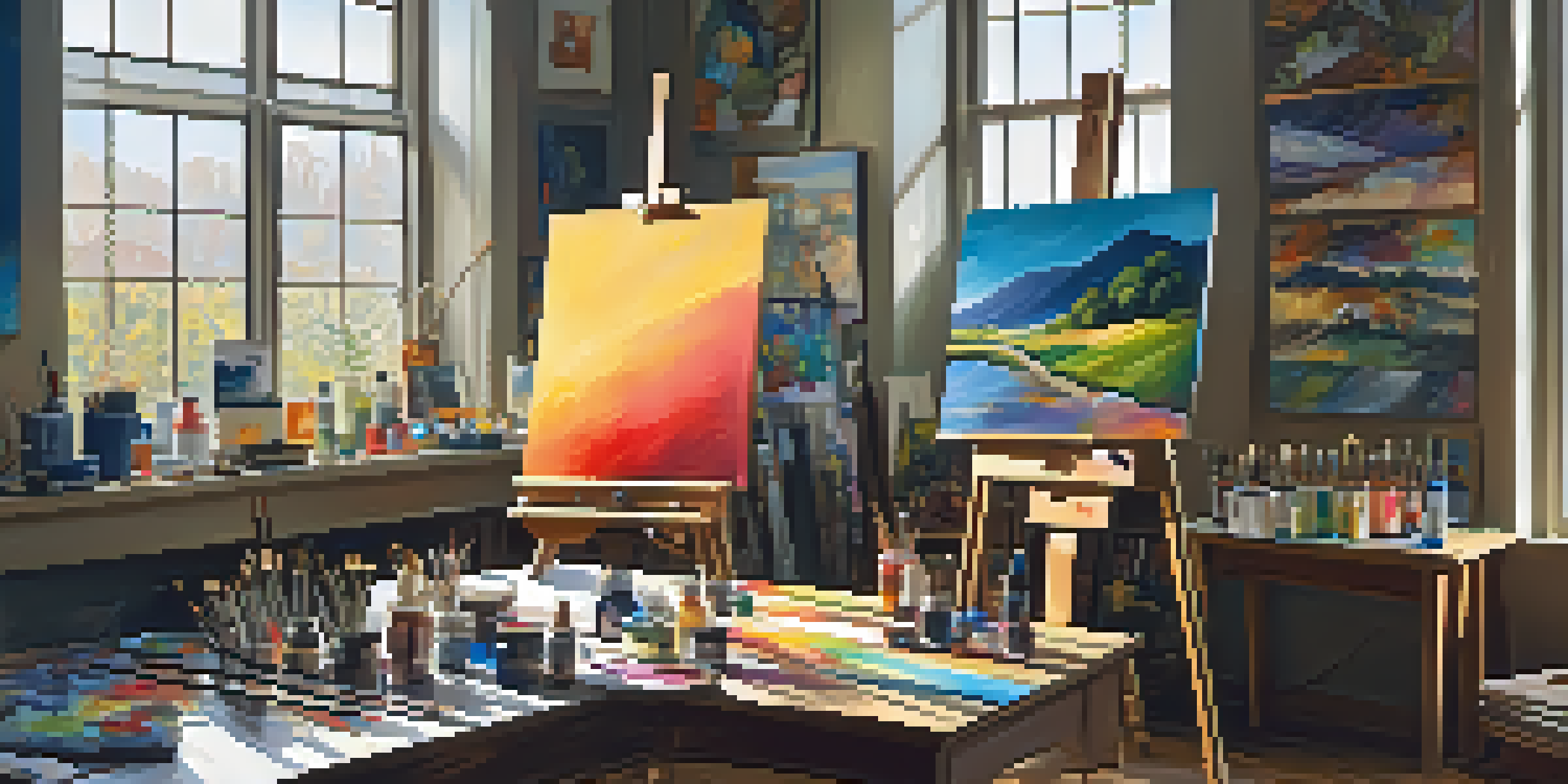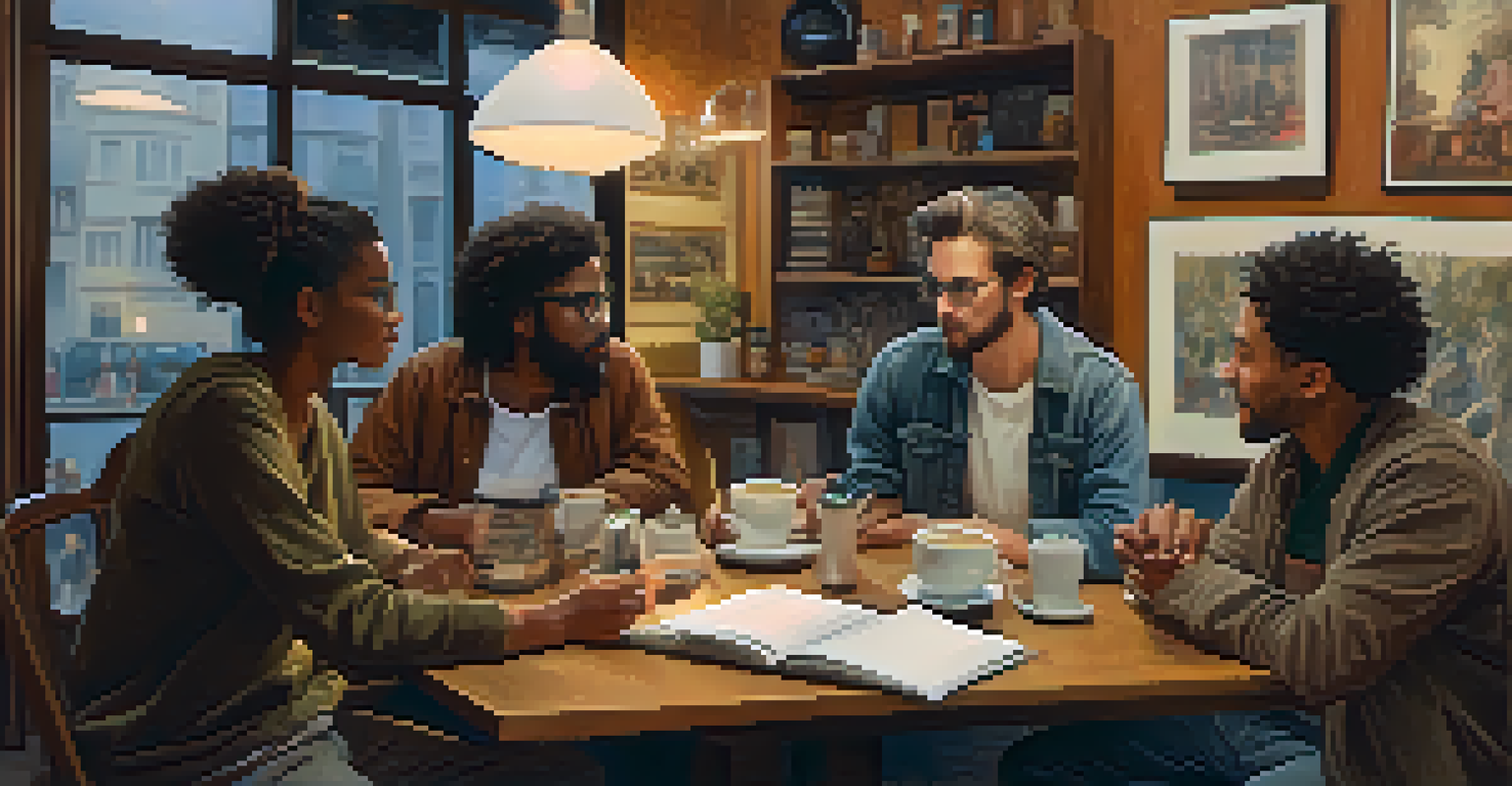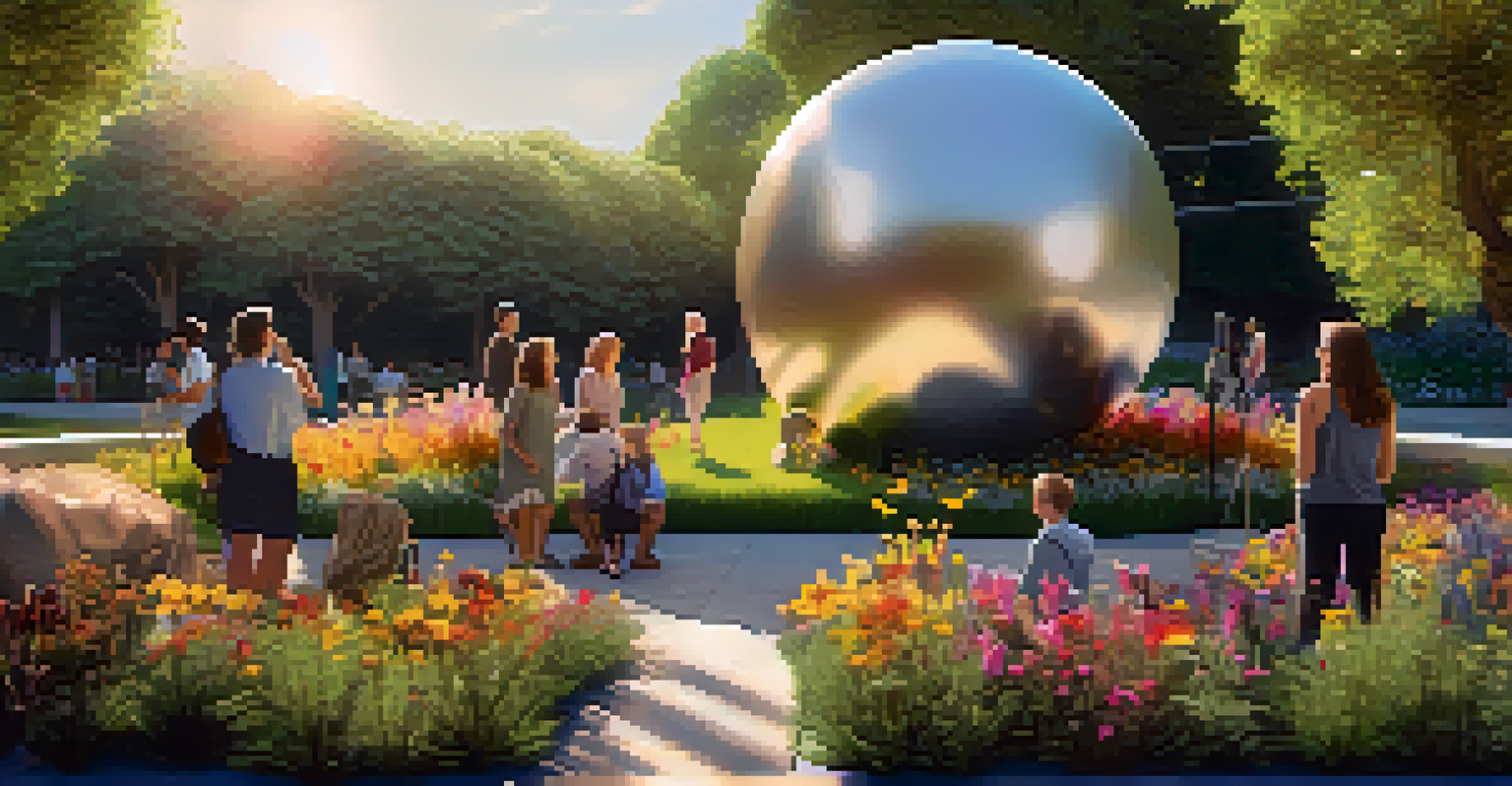The Role of Collaboration in Developing Artistic Identity

Understanding Artistic Identity and Its Importance
Artistic identity is like a fingerprint; it’s unique to each creator and reflects their experiences, beliefs, and emotions. It shapes how artists express themselves and connect with their audience. For many, developing this identity is an ongoing journey that evolves over time, influenced by various factors including personal experiences and relationships.
Creativity is contagious, pass it on.
Establishing a strong artistic identity can help artists distinguish themselves in a crowded field. This identity not only influences the style and themes of their work but also informs their decisions about collaborations, exhibitions, and audience engagement. Ultimately, a well-defined artistic identity allows creators to communicate their vision clearly and authentically.
However, developing this identity is often not a solitary endeavor; it frequently requires input, inspiration, and feedback from others. This is where collaboration plays a crucial role—offering artists new perspectives and opportunities to refine their voice.
Collaboration: A Catalyst for Creativity
Collaboration can act as a spark, igniting new ideas and creative pathways. When artists come together, they bring diverse viewpoints, skills, and experiences that can lead to innovative outcomes. For example, a painter collaborating with a musician might create a multimedia installation that blends visual art with sound, resulting in a richer experience for the audience.

Working alongside others encourages artists to step outside their comfort zones. This stretching of boundaries often results in unexpected directions in their work, allowing them to experiment with new techniques or themes they might not have considered alone. It’s in this space of exploration that an artist’s identity can expand and deepen.
Artistic Identity Shapes Expression
An artist's identity is a unique reflection of their experiences and beliefs, influencing how they connect with their audience.
Moreover, collaborative projects can foster a sense of community, where artists support each other in their creative endeavors. This nurturing environment can lead to increased confidence and motivation, further strengthening their individual artistic identities.
Learning from Diverse Perspectives Through Collaboration
One of the most enriching aspects of collaboration is the exposure to different perspectives. Artists from various backgrounds and disciplines can offer insights that challenge pre-existing notions and inspire growth. For instance, a graphic designer might introduce a painter to digital tools that open up new avenues for creative expression.
Great things in business are never done by one person; they're done by a team of people.
This cross-pollination of ideas can lead to the discovery of new styles, techniques, or themes that resonate with an artist's identity. By embracing different viewpoints, artists can refine their own ideas and create work that is more complex and nuanced. This blending of influences often results in a signature style that reflects their unique artistic journey.
Additionally, engaging with diverse collaborators can help artists understand their role within larger cultural conversations. This awareness can inform their artistic choices and help them articulate their identity more clearly to the outside world.
Building Confidence Through Collaborative Experiences
Collaboration can also be a great confidence booster for artists. Working with others can validate an artist’s ideas and encourage them to take bolder creative risks. When artists share their work with collaborators, they often receive constructive feedback that can help them refine their voice and push their boundaries.
For instance, a writer might collaborate with a visual artist to create a graphic novel, allowing them to experiment with storytelling techniques in a new format. This kind of learning experience can instill a sense of accomplishment and identity that may not have emerged from solo projects.
Collaboration Fuels Creative Growth
Working with others introduces diverse perspectives that can inspire new ideas and expand an artist's creative boundaries.
As artists grow more confident in their abilities and vision, they begin to embrace their artistic identity more fully. This newfound confidence can lead to greater opportunities and further collaborations, creating a positive feedback loop in their creative journey.
The Role of Feedback in Collaborative Art Processes
Feedback is an essential component of collaboration, serving as a mirror that reflects an artist’s strengths and areas for growth. When artists collaborate, they have the chance to share their work with peers who can provide insights that they might not see themselves. This exchange can be invaluable in helping them shape their artistic identity.
For example, a musician might share a song with fellow artists and receive suggestions that enhance the composition. This constructive criticism can lead to a more polished final product and a deeper understanding of their artistic voice. It’s through this process that artists learn to communicate their intentions more effectively.
Moreover, feedback can help artists identify patterns in their work that align with their identity. Recognizing these patterns can empower them to make more intentional choices in future projects, reinforcing their unique creative path.
Collaborating Across Disciplines: Expanding Artistic Horizons
Collaborating with artists from different disciplines can significantly broaden an artist’s perspective. For instance, a sculptor working with a digital artist may discover new ways to incorporate technology into their physical creations. This fusion of disciplines can lead to groundbreaking work that redefines traditional boundaries of art.
Such interdisciplinary collaborations encourage artists to think outside the box and explore uncharted territories in their work. This exploration not only fosters personal growth but also enriches their artistic identity as they learn to integrate various influences into their practice.
Feedback Strengthens Artistic Voice
Constructive feedback from collaborators helps artists refine their work and develop a clearer understanding of their artistic identity.
In today’s ever-evolving creative landscape, this kind of cross-disciplinary collaboration is more important than ever. It invites artists to adapt and innovate, ultimately shaping a more dynamic and multifaceted artistic identity.
Embracing Vulnerability in Collaborative Art
Collaboration often requires artists to embrace vulnerability, which can be both daunting and liberating. Sharing ideas and works-in-progress with others exposes artists to potential criticism, but it also opens the door to authentic connections. This vulnerability can lead to deeper relationships with fellow creators, enriching their artistic journey.
By being open to feedback and new ideas, artists can challenge their assumptions and grow in ways they might not have anticipated. For example, a dancer collaborating with a choreographer might push their physical limits, leading to a transformative experience that enhances their artistic identity.

In the end, embracing vulnerability in collaborative settings can lead to powerful moments of creativity and self-discovery. This process not only strengthens their artistic identity but also cultivates resilience, preparing artists for future challenges in their creative endeavors.
Conclusion: The Lasting Impact of Collaboration on Artistic Identity
In conclusion, collaboration plays a vital role in shaping an artist's identity. By engaging with others, artists can expand their horizons, gain confidence, and refine their unique voices. The exchange of ideas and perspectives fosters an environment where creativity can flourish, leading to innovative and impactful work.
As artists navigate their journey, collaboration serves as both a catalyst and a support system, encouraging them to explore new avenues and embrace vulnerability. It's through these collective experiences that they can discover and articulate their artistic identity more clearly.
Ultimately, the lasting impact of collaboration is not just in the art created but in the relationships forged and the personal growth experienced by each artist. In a world that thrives on connection, the role of collaboration in artistic identity is more significant than ever.